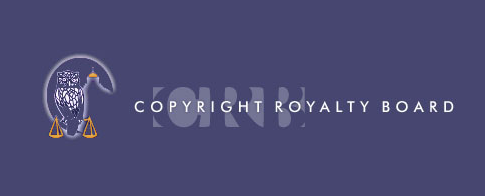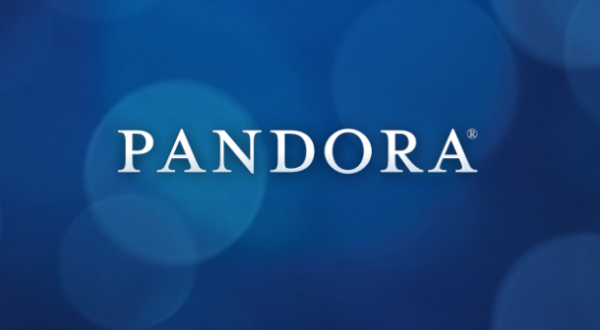 Yesterday, the U.S. Copyright Royalty Board (CRB) raised royalty rates for Internet radio streams from 0.14 cents to 0.17 cents per song played. The 21% royalty increase takes effect in 2016. Future rates will rise annually between 2017-2020 based on the Consumer Price Index. What does this mean for the industry? Higher costs are now a certainty in the U.S. for streaming services that leverage the CRB system. Those streamers will need to find revenue growth to offset the higher cost basis.
Yesterday, the U.S. Copyright Royalty Board (CRB) raised royalty rates for Internet radio streams from 0.14 cents to 0.17 cents per song played. The 21% royalty increase takes effect in 2016. Future rates will rise annually between 2017-2020 based on the Consumer Price Index. What does this mean for the industry? Higher costs are now a certainty in the U.S. for streaming services that leverage the CRB system. Those streamers will need to find revenue growth to offset the higher cost basis.
Spotify, Slacker and Others Not Impacted Directly
Who is impacted by the rate change? It depends. The rates impact Pandora and some radio broadcasters with online services, but not those that have direct contracts with royalty holders which generally means the music labels. Spotify, Slacker and other services that hold direct contracts and pay a percent of their total revenue to royalty holders are unaffected by CRB rate changes. However, their direct contracts also come with a high price tag.
Music Business Worldwide reports that Spotify’s cost of sales was 81% in 2014. Most of that, nearly 70% of total revenue according to Spotify, goes to royalty rights holder—music labels, artists, publishers, songwriters. By contrast, Pandora’s cost of sales was only 55% of revenue in 2014 with 48% labeled as content acquisition costs. This is much lower than many rivals because Pandora chooses to use the CRB system that imposes functionality limits in exchange for lower rates. With that said, a 21% royalty rate increase could drive content acquisition costs as high as 59% of revenue without any other change to Pandora’s business. In 2014, that would have equated to nearly $94 million.
The Quest for Revenue
There are multiple strategies to employ in the quest for higher revenue. A commonly discussed approach is to increase the number of subscribers since they generate higher annual revenue. The key challenge on this front is that data from Nielsen and other analysts show that as high as 95% of consumers choose ad-supported listening for internet radio streaming services. That translates into about 54% of industry revenue today generated by advertising. Other economic studies show strong price elasticity around subscription pricing. That means you can’t raise subscription prices without experiencing a substantial fall in subscribers and lose that revenue completely.
Increased subscription revenue won’t solve the cost problem. Other sources of income such as selling concert tickets can help, but will be immaterial for the near future. The key revenue lever is advertising. But why higher ad rates and not expanded inventory? The fact that Internet radio ad load is 20% or less that of broadcast radio might suggest that inventory could be increased. However, evidence from the Internet Radio Ad Load Report, eMarketer and public statements by Internet radio publishers suggest there is an upper limit to ad load (i.e. total ad time per hour) before users start defecting to other audio services. The advertising revenue equation is:

It is obvious that increasing ad-supported user sessions will increase revenue, but it also increases cost since every session carries royalty payment requirements. This is not a strategy to fix a variable cost problem. The second factor determines how much ad inventory is available to sell, but there is little room for movement in ad load as indicated above. That leaves the CPM or ad rate variable as the opportunity to deliver the most impact. If you raise CPM, you improve the economics for every ad-supported user session.
Audio Publishers of All Stripes Need Higher CPM
 Pandora and other audio publishers that rely on CRB royalty rates need higher CPM to offset higher costs. Audio publishers that rely on direct rights licensing contracts also need higher CPM to alleviate an even more challenging cost structure. This is where XAPPmedia enters the picture. While some audio publishers are now using XAPP to drive higher content and artist engagement in order to augment the user experience, others are leveraging interactive audio ads to capture 4-5 times higher CPM than existing rates. Advertisers willingly pay the higher rates because the consumer engagement rates are as much as 25 times higher than other mobile ad formats. It is all measurable and the performance significantly exceeds the alternatives.
Pandora and other audio publishers that rely on CRB royalty rates need higher CPM to offset higher costs. Audio publishers that rely on direct rights licensing contracts also need higher CPM to alleviate an even more challenging cost structure. This is where XAPPmedia enters the picture. While some audio publishers are now using XAPP to drive higher content and artist engagement in order to augment the user experience, others are leveraging interactive audio ads to capture 4-5 times higher CPM than existing rates. Advertisers willingly pay the higher rates because the consumer engagement rates are as much as 25 times higher than other mobile ad formats. It is all measurable and the performance significantly exceeds the alternatives.
The CRB announcement in many ways is good news for the industry. It creates some price stability and clarity that will enable publishers and rights holders to make long-term plans. However, it once again shines a light on the fact that driving higher ad rates is the surest path to improving industry economics. Advertisers have a lot of choices today. To get them to pay more, you have to deliver more value. XAPP Ads are one tool publishers are using today to get their economic house in order.
See some examples by downloading a mobile demonstration app here: https://bnc.lt/m/gCvl5ZY7Bl
Related Posts
RIAA Misleads While Advertising Delivers 54% of Internet Radio Revenue
Nielsen Data Confirm Listener Time Shift to Ad-Supported Online Audio
Internet Radio’s Ad-Supported Present and Future
